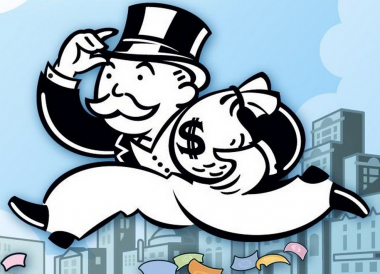
Due to a rare medical condition, I am unable to MS more than 1hr per week. Any longer and my left eyelid starts to twitch uncontrollably. This makes post App-O-Rama times interesting in the Saverocity household, where I recently took on a requirement of 25K+10K+10K+5K+6K+6K min spends by year end..
Money = Time
I always talk about how time is money, and should be priced in. To prove any equation, including this, you invert the equation and see if it remains valid. If my time really is limited to 1hr, can Money leverage that?
$5K spend on Crapital One Spark
This is a great bonus, often ignored by the blogging experts. $500 for $5000 min spend, and 2% on everything. So you’d earn $600. My bonus cash triggered mid first cycle, and I applied it to the balance before paying the rest down mid month. $5000 spend came from $1200ish to our quarterly charity (we donate credit card income to charity – get involved!) and $3800 to Kiva. In two transactions, the min spend is met.
In this example, its really only a $3800 spend. I intentionally timed the App to know I would have the charity expense. The $3800 transaction took probably 4-5mins to complete, and I didn’t have to leave the mancave. If you compare that to the standard alternative: buy a gift card, buy a money order, I would say that I probably saved about 40 minutes in exchange for money… I swapped float for convenience. Note that Kiva has a default risk, but risk isn’t the same as a fee.. so the fee saved works towards mitigating principal loss risk.
How to look at this
Instead of you going out to run around town like a demented hamster, you are paying a price for someone else to take the spend into the system, and return it to the float. The price you are paying here (because there is no fixed fee) is the time it takes to return to float, plus a variable fee attached to potential loss. As an equation:
- Time (walk/drive) +GC Fee+ Time (walk/drive) + MO fee = Goal
- Time (few minutes to load, few clicks to unload) + Giving up float + Possible Loss = Goal
- Time (walk/drive)+Time (walk/drive)=Time (clicks to load, clicks to unload)+Float lock up
Card 2 – Paying a contractor a surcharge to use credit
I’m getting some HVAC work done, sadly the cost is about $5700 including parts and labor. I really like the team who I selected to work with, so don’t want to screw them over (remember, you don’t need to screw over everyone in your quest for points and value…) I asked if they take credit cards.
They do… ! But they get charged a 2% fee.
Because the fee was 2% I figured they might not be talking Amex (my last card to hit spend on.. $10K by some date, I guess 90 days) so I checked, and offered all in one: If you take Amex, add on a surcharge to cover your loss, and we all win. 2% of $5700 is $114. Could I have been a dick and demanded this, for free, of course! But if I’m benefitting, I’m happy if they do too. I thought about this, and had considered going as high as 3%.. I wondered if I could go higher.
Of course, people with ape like avatars on Twitter called me insane… but I get that a lot.
@Saverocity don't see where time/spend is factor. it's simple math- makes sense or it doesn't: what card gives btr GUARANTEED $ reg spend.
— HK Trader (@1hktrader) October 28, 2015
Let’s do Maths again
$5700 is would be 11 GCs at $500 and a bit. Let’s say they are $5 each,+ 0.70 to liquidate, that’s $62.70.
Most stores won’t sell you 11 GCs in a single transaction, so that means visiting two stores, maybe on the same trip, so your 20min drive becomes 30-40 to acquire. You could liquidate in one visit, but it requires ‘the book’ which slows things down another 5 mins. All in, maybe an hour, hour 15?
- $62.70+1hr15 = $114 + 0 hrs
- $51.30 = 1hrs15
In addition to my medical condition, I have another problem… I’ve taken on large travel ‘obligations’ in that we have may partial trips booked, and I need to get up to 420K UA pts (from 10K… a month ago) in the next month or two. So anything that takes away from earning those also hurts.
With time being limited there is a constant pull between earning a 5% (or more with the EDP card) at groceries, earning UA and meeting min spend. Sometimes, you’ve got to pay the piper, 2%, or even 3% to make it all come together…. Don’t forget though, if you are earning at a 5x rate, you can pay a 3x fee on a cross over gig (the surcharge) and still win.
That – or you have to drop everything that is really important to you, such as time with your family, or building your career or business, and keep a couple of bucks.. that’s smart.
The post Blasting out Min Spends in Min Time appeared first on Saverocity Travel.
Continue reading...
